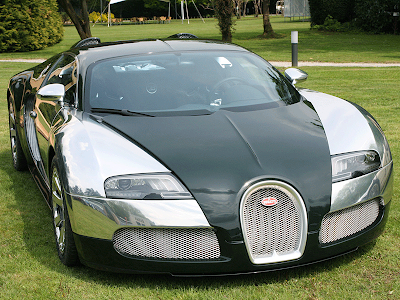The 612 Scaglietti is the result of an avant-garde design that continues the great Ferrari 2+2 tradition. Styled by Pininfarina, the 612 Scaglietti is named in honour of Sergio Scaglietti, the Modenese stylist and coachbuilder responsible for bodying some of the most beautiful Ferraris Sports Cars of the 1950s and 60s.
Ferrari Sports Cars 612 Scaglietti a Sporty Coupé
The 612 Scaglietti epitomises Ferrari's talent for innovation and design. This exhilaratingly nimble, beautifully balanced sporty front-engined rear-wheel drive berlinetta offers a cockpit capable of accommodating four occupants in unprecedented comfort. The 612 Scaglietti isn't just a 2+2 but a spacious two-door four-seater that's a pleasure to be aboard in any driving conditions.
While the Ferraris Sports Cars 612 Scaglietti has the heart of a sporty coupé, its luxurious dimensions and design are that of a surprisingly roomy Granturismo. Its deft Pininfarina styling is as innovative as its design, underscoring its dynamism and power. The result is an imposingly sculptural car with a long sleek bonnet, strong lines and signature scooped flanks borrowed from the famous Rossellini-Bergman 375 MM.
The 612 Scaglietti was the very first all-aluminium Ferrari 12-cylinder. It's no surprise therefore, that it is named in honour of Sergio Scaglietti, the Modenese coachbuilder who worked with Enzo Ferrari in the early years of his great adventure, masterfully sculpting some of the most famous track and road-going Ferraris ever from that very metal (which is just a third of the specific weight of steel). Both the 612 Scaglietti's chassis and bodywork are aluminium.
The 612 Scaglietti's innovative panoramic stratified glass roof extends right across the top of the cockpit from windscreen to rear window, giving all four occupants a drop-top driving sensation of spaciousness and airiness. There are three tint level settings to allow occupants adjust the amount of sunlight allowed into the car.
The 612 Scaglietti's braking system features CCM (carbon ceramic material) discs, making it highly responsive and efficient even in the most intense driving conditions. The 612 Scaglietti's brakes are also exceptionally resistant to fading and thus guarantee effective braking in high-stress driving situations. The use of CCM technology guarantees enhanced ride quality too. The 612 Scaglietti's wheels have been selected for optimal performance and weight reduction.
Ferrari's team of highly-experienced, passionate artisan cockpit trim experts ensure that every 612 Scaglietti leaves Maranello with an elegantly sophisticated and sporty cockpit honed to meet the tastes of its owner. This bespoke quality and exclusivity means that owners can choose from a range of dash panel inserts, seat trims and side panels.
The easy-to-reach main controls for the onboard infotainment system are also steering wheel-mounted. The dual zone climate control automatically adjusts cockpit temperature, humidity levels and ventilation. An 8-channel Surround Sound audio system was developed specifically for the cockpit so that the acoustics are on a par with the best Home Theatre system, in all driving conditions.
The 612 Scaglietti is powered by an imposing 5,748 cm³ 65° V12 that delivers 540 CV at 7,250 rpm, 98 CV more than the 456M's 5,474 cm³ unit. The engine has been worked upon on various levels to optimise performance and improve fluid dynamics. Specifically, it boasts more direct air intake tracts with two ducts from the radiator grille opening on the front bumper, new exhaust system geometries and volumes to reduce back-pressure, a boosted compression ratio (11.2:1), and inlet tracts and exhaust porting with improved fluid dynamic characteristics.
It is controlled by a Bosch Motronic ME7 ECU. Meticulous honing of the 612 Scaglietti's dynamic handling has resulted in prompt yet smooth responsiveness, making it easier to control in all kinds of conditions.


























































